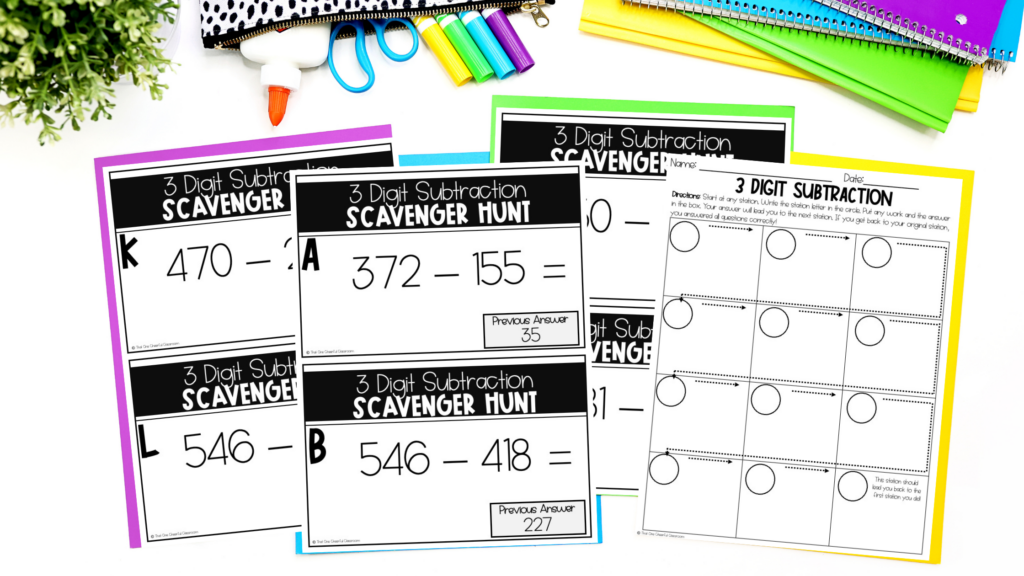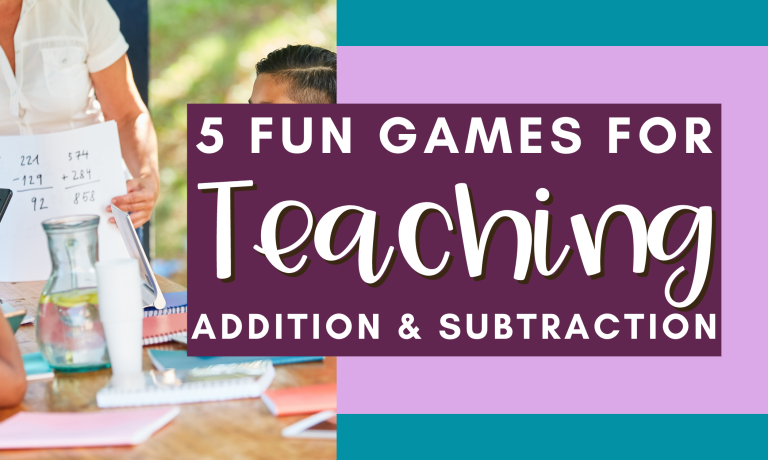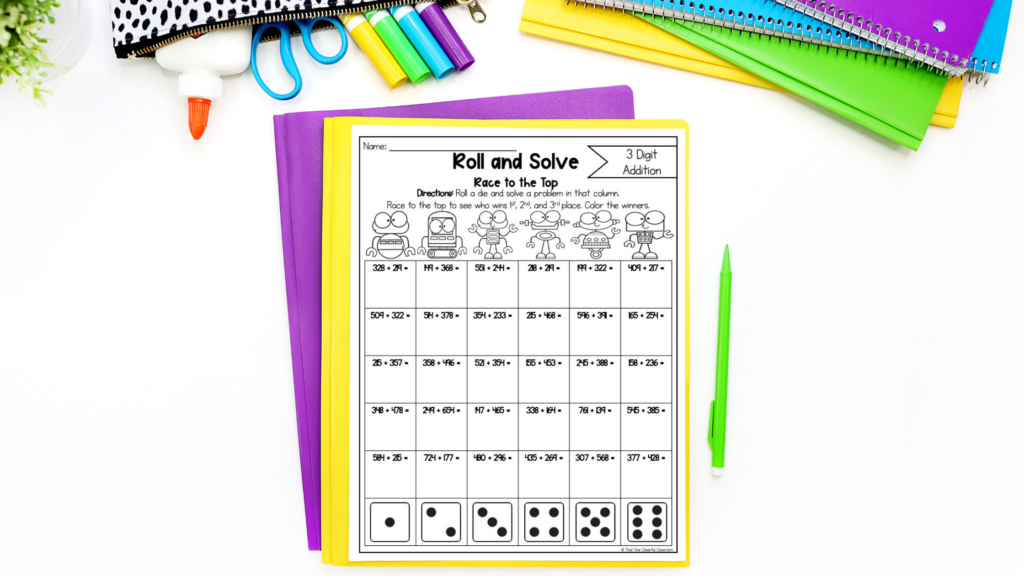Teaching addition and subtraction can sometimes be challenging, especially when students find it difficult to engage with the material. However, incorporating games into the learning process can make math more enjoyable and increase student participation. In this blog post, we’ll explore five fun games that can be used when teaching addition and subtraction, making math lessons interactive and exciting for students.
Game 1: Math Bingo
Math Bingo is a classic game that can be so much fun when teaching addition and subtraction skills. Create bingo cards with numbers or equations, and give students counters or markers. You will call out addition or subtraction problems; students solve them on their bingo cards. The first student to form a line or complete the entire card shouts, “Bingo!” and wins the round. This game enhances computational skills and encourages quick thinking and mental math.
Game 2: Race to the Top
Race to the Top is a dice game that allows students to practice addition and subtraction while having fun. Each student takes turns rolling a die and solving the equation on the page. For example, if students roll a 3, they will find the equation at the bottom of the column labeled 3. Students can use manipulatives like base ten blocks or other strategies they’ve learned to help solve the math problem. The game continues until they reach the top of three of the columns. This activity can be extended by having them see which “place” each character at the top is based on how quickly they get to the top of each column.

Game 3: Math Scavenger Hunt
Math Scavenger Hunts combine physical activity and math skills. Create a list of addition and subtraction problems, hiding each problem’s answer and the next card in different locations around the classroom or outdoor area. Students work individually or in teams to solve the math problems and locate the corresponding answers. For example, if the problem is 7 + 4, the answer might be on a new question card on the whiteboard with the previous answer box labeled “11.” This game promotes problem-solving, teamwork, and movement while reinforcing addition and subtraction concepts. Read more about math scavenger hunts here.
Game 4: Math Game Show
Transform your classroom into an exciting math game show to engage students when teaching addition and subtraction challenges. Divide the class into teams and optionally create a game show atmosphere with buzzers or handheld devices. As the teacher, you will serve as the host and asks various addition and subtraction questions at different difficulty levels. Teams compete to answer correctly and earn points. This game reinforces math skills and encourages critical thinking, healthy competition, and effective communication. Click here to grab an addition and subtraction game show.
Game 5: Math Bump Games
Math Bump Games are interactive and competitive activities that promote addition and subtraction skills. Students work in pairs, each with a different-colored set of counters or tokens. They take turns rolling dice and solving the equation from the numbers rolled. After solving the problem, the student covers the corresponding answer on the game board with their colored token. If a partner rolls the same number and hasn’t covered it yet, they can “bump” the other player’s token off the board. The first player to use all their tokens or cover the most spaces wins the game. Math Bump Games reinforce math facts and strategic thinking. Click here to grab an addition and subtraction bump game.
By incorporating these five fun games into your math lessons, you can transform the learning experience for your students. Math Bingo, Race to the Top, Math Scavenger Hunts, Math Game Shows, and Math Bump Games offer engaging ways to practice addition and subtraction skills while promoting critical thinking, collaboration, and excitement in the classroom. Remember, students are more likely to actively participate and retain their learned concepts when learning becomes enjoyable. So, try these games and make math a fun adventure for your students!

